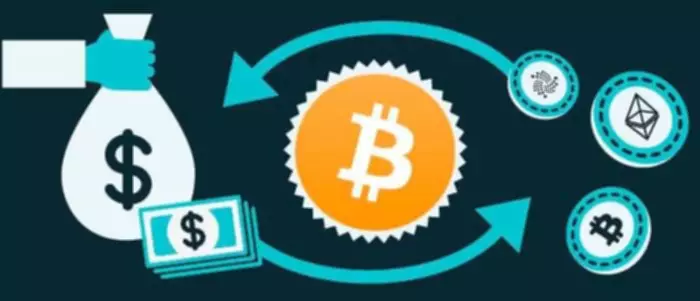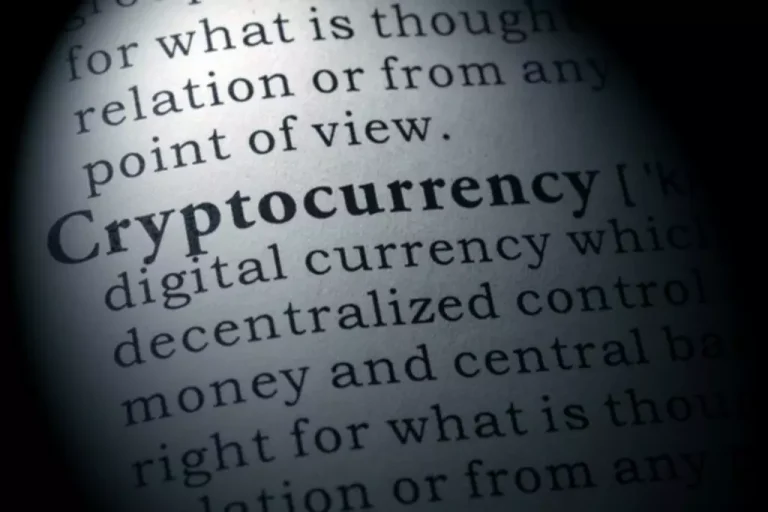The two DMA controllers have 12 channels in whole (7 for DMA1 and 5 for DMA2), every dedicated to managing memory entry requests from one or more peripherals. Direct Memory Access makes use of hardware for accessing the reminiscence, that hardware known as a DMA Controller. It has the work of transferring the info between Input Output gadgets dma in forex and primary reminiscence with very much less interaction with the processor. The direct Memory Access Controller is a management unit, which has the work of transferring data. Once the information transfer is complete, the DMA controller releases control of the system bus.

DMA can also be used for “reminiscence to memory” copying or moving of knowledge within reminiscence. DMA can offload expensive reminiscence operations, such as giant copies or scatter-gather operations, from the CPU to a dedicated DMA engine. DMA is of interest in network-on-chip and in-memory computing architectures.
Using Rdma
The peripheral DMA requests may be independently activated/de-activated by programming the DMA control bit within the registers of the corresponding peripheral. The transfer data sizes of the peripheral and memory are absolutely programmable by way of the PSIZE and MSIZE bits within the DMA_CCRx register. In the modern digital world, data is constantly transmitted between computers and units. Nevertheless, the rate at which computer methods can course of knowledge is finite.
In this mode, the information strikes alongside a single path without having bidirectional communication. This simplifies the process and reduces the complexity of managing knowledge transfers. By utilizing DMA, devices like network playing cards, graphics playing cards, system drivers, and storage controllers can instantly entry reminiscence areas without constant intervention from the processor. This streamlined course of accelerates data movement and reduces latency in data exchange inside the system.

Once the request is de-asserted by the peripheral, the DMA Controller releases the Acknowledge. If there are more requests, the peripheral can provoke the following transaction. For example, in an architecture that has a CPU cache when the DMA unit accesses the info memory and writes to a location that can additionally be mirrored in the cache, this can invalidate the data in cache reminiscence. This a problem to overcome, and there are other but it’ll be a topic https://www.xcritical.com/ for a future article. I simply wished to spot some mild on this point, apart from being advantageous the DMA can even introduce some issues. The incontrovertible reality that switching the context to and from interrupt handlers takes up some cycles which are completely wasted and periodically happens as interrupt signals are getting fired repeatedly is what makes this structure problematic to an extent.
Kinds Of Direct Memory Entry (dma)
To simplify the reason, we assume that the CPU accesses all units and reminiscence by way of a single system bus that connects the CPU, the reminiscence, and the I/O units, as proven in Fig. Internally, a multichannel DMA engine is often current within the gadget to perform multiple concurrent scatter-gather operations as programmed by the software. By doing so, DMA slashes latency, boosts throughput, and empowers multitasking prowess in servers, network gear, and storage systems. Without DMA, your CPU could be stuck in visitors gridlock, slowing operations and hindering general system responsiveness. In essence, DMA is the secret sauce that keeps the IT infrastructure buzzing alongside smoothly and effectively.

As we now have defined, DMA is a technology that enhances data transfer effectivity in computer methods. One key characteristic of single-ended DMA is that it includes only one channel for communication between the peripheral system and reminiscence. This easy approach makes it simpler to implement and perceive than different kinds of DMA configurations. Peripheral and memory pointers can optionally be mechanically post-incremented after every transaction relying on the PINC and MINC bits within the DMA_CCRx register. If incremented mode is enabled, the tackle of the following transfer will be the tackle of the earlier one incremented by 1, 2, or four relying on the chosen knowledge size.
This step is essential as it permits different devices to entry the bus for their own operations without any interference from the DMA process. By allowing gadgets to ship and receive data concurrently, dual-ended DMA improves total system efficiency by minimizing idle time during knowledge exchanges. This ends in quicker response times for input/output operations and better utilization of system assets. The unit communicates with the CPU by way of the info bus and control traces. Through the use of the address bus and allowing the DMA and RS register to select inputs, the register within the DMA is chosen by the CPU. When BG (bus grant) input is 0, the CPU can communicate with DMA registers.
What Is Direct Reminiscence Access (dma)?
It contains two 16-bit registers, one is DMA Address Register and the other one is Terminal Count Register. The buffer in this case is a bit of memory on the hard-disk (controller) itself, and the controller device register a control register of the hard-disk (controller) itself. An alternative to DMA is Ultra DMA, which offers a burst information transfer price as a lot as 33 megabytes per second (MBps).
- Hybrids additionally exist, where the secondary L2 cache is coherent whereas the L1 cache (typically on-CPU) is managed by software.
- In Interleaved DMA, information is split into smaller blocks or packets, that are transferred alternatingly between different devices.
- However, to take a look at them as two separate units makes the entire concept of DMA a little less difficult to understand.
- The new Double Address Cycle (DAC) mechanism, if applied on each the PCI bus and the device itself,[7] enables 64-bit DMA addressing.
In Interleaved DMA, data is divided into smaller blocks or packets, which are transferred alternatingly between different devices. This ensures environment friendly memory bus utilization and reduces bottlenecks that could occur with sequential transfers. In arbitrated-ended DMA, a quantity of gadgets on a bus contend for entry to the reminiscence.
In such a case, a device using DMA with a 32-bit tackle bus is unable to handle memory above the 4 GB line. The new Double Address Cycle (DAC) mechanism, if carried out on both the PCI bus and the system itself,[7] enables 64-bit DMA addressing. These symbols, seen on hardware schematics of computer methods with DMA functionality, symbolize electronic signaling strains between the CPU and DMA controller. A gadget that makes use of DMA must be configured to use both strains of the assigned DMA channel.
This translates into an insane number of interrupts per second being fired by totally different peripherals like UART, SPI, ADC, and so on. In this tutorial, we’ll talk about the direct reminiscence entry unit (DMA) in STM32 microcontrollers. We’ll start with an introduction for what’s a DMA unit, when, and why to use it. Afterward, we’ll start discussing the STM32 DMA hardware, its options, and tips on how to configure it in your initiatives. And some example functions that we’ll be constructing all through this course. DMA Controller is a hardware gadget that enables I/O units to instantly access memory with much less participation of the processor.
The CPU processes an instruction, then the DMA controller transfers one data worth, and so forth. Data just isn’t transferred as quickly, however CPU isn’t idled for so lengthy as in burst mode. Cycle stealing mode is beneficial for controllers that monitor data in actual time. Upon receiving the DMA request, the DMA controller checks if the bus is out there and then initiates entry to memory. By dealing with these requests independently of the CPU, DMA considerably reduces processor overhead and speeds up information transfers between devices and reminiscence. Direct reminiscence access (DMA) is a expertise that permits hardware gadgets to switch data between themselves and reminiscence without involving the central processing unit (CPU).
Cons Of Dma
You might maintain a lack of some or your whole initial investment and should not invest cash that you just can’t afford to lose. DeepBlueMbedded is an educational web site the place yow will discover technical content material (Articles – Tutorials – Projects – and so on..). You’ll discover additionally downloadable resources like firmware code examples, schematics, hardware designs, and more. All rights are reserved, together with these for textual content and information mining, AI training, and comparable technologies. Not involving the OS (or another software) would require some type of DMA operation, and the section of textual content you may be discussing in this a part of your question is NOT using DMA.
Since the SPE’s load/store directions can read/write solely its personal native reminiscence, an SPE entirely depends on DMAs to transfer knowledge to and from the primary memory and local reminiscences of other SPEs. Thus the DMA acts as a major means of information switch amongst cores inside this CPU (in distinction to cache-coherent CMP architectures such as Intel’s cancelled general-purpose GPU, Larrabee). In a bus mastering system, also called a first-party DMA system, the CPU and peripherals can each be granted control of the memory bus. Where a peripheral can turn out to be a bus grasp, it might possibly directly write to system reminiscence without the involvement of the CPU, providing reminiscence handle and management alerts as required. Some measures have to be provided to place the processor into a maintain situation in order that bus rivalry does not occur.

Usually, a specified portion of memory is designated as an space to be used for direct reminiscence entry. For instance, in the Industry Standard Architecture bus standard, up to 16 MB of reminiscence could be addressed for DMA. Other bus standards might permit access to the full vary of reminiscence addresses. Peripheral component interconnect makes use of a bus grasp with the CPU delegating I/O control to the PCI controller. Transparent mode takes probably the most time to switch a block of data, yet it’s also the most efficient mode when it comes to general system efficiency. In clear mode, the DMA controller transfers information solely when the CPU is performing operations that do not use the system buses.
When a quantity of units need to entry the memory simultaneously, the DMA controller arbitrates between these requests to make sure environment friendly utilization of the system’s resources. By adhering to these ideas, DMA facilitates efficient and reliable data transfer between gadgets and memory, contributing to general system performance and responsiveness. This technique may be less efficient than different DMA types because it relies closely on CPU intervention, leading to increased overhead and slower processing speeds.




